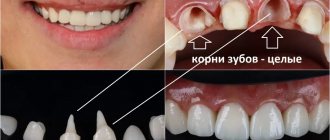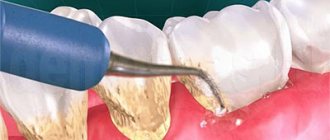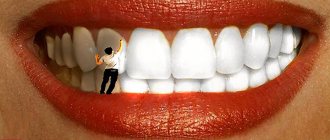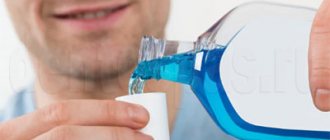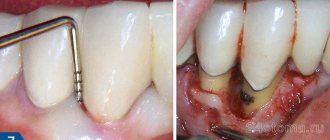Teeth whitening is one of the most popular services in dentistry. A professional procedure allows you to get rid of plaque on your teeth, which is formed as a result of external influences. High-quality whitening is effective even against yellow enamel, which is typical for smokers. After the procedure, the teeth become white. Since not everyone is ready to give up a bad habit, even for the sake of a beautiful smile, dentists are often asked the question: is it possible to smoke after teeth whitening?
How smoking affects teeth
Smoking is harmful to the entire body, including the teeth, which are the first to bear the brunt of tobacco smoke and high temperatures. Under the influence of cigarettes, the enamel begins to deteriorate, microcracks appear on it, through which tobacco smoke substances and bacteria present on the teeth quickly penetrate.
Plaque formation in smokers occurs quickly, and it is difficult to remove it on your own. In addition, tobacco lovers are unlikely to brush their teeth after every cigarette they smoke. As a result, the enamel is destroyed, which leads to tooth decay, and the plaque gradually hardens, forming tartar, which contributes to the development of gum disease.
The longer a person smokes, the more their teeth will suffer. Gradually, negative processes will begin to progress, which will undoubtedly entail serious aesthetic and pathological consequences.
Can restrictions be removed?
Thanks to the fact that many clinics in St. Petersburg conduct regular promotions aimed at attracting new patients, the price of hygienic teeth cleaning using ultrasound is affordable to almost everyone today. A mandatory component of the procedure is a preliminary examination, during which possible contraindications are identified. Additional treatment prescribed in such cases may increase the cost of the service, but it is a necessary condition.
Considering diagnosed viruses and infections as limiting factors is associated with concern for the health of not only the patient, but also the doctor. An organism susceptible to pathology is capable of responding inadequately to treatment - under the influence of ultrasonic waves, an increase in cellular metabolism is possible, so you should wait until complete recovery.
Limitations associated with heart disease, as well as the presence of pacemakers, are caused by the effect of ultrasound on the circulatory system. Heart rhythm disturbances pose a threat to human life, which leads to recommendations for choosing other methods of professional dental cleaning.
Doctors advise refraining from ultrasonic cleaning during pregnancy, as well as in the first months after the birth of a child. This is due to the sensitivity of the body, which increases at these stages - external influences can negatively affect the patient’s well-being, as well as provoke an unplanned reaction. An option recommended when planning a pregnancy is to carry out dental procedures a couple of months before conception, which allows you to avoid situations that require an urgent visit to the clinic.
Changes in enamel color in smokers
In the process of smoking a cigarette, smoke enters the human body, which contains tar, nicotine and combustion products. They stick tightly to tooth enamel, staining it an unnatural color. Smokers often have yellow or brown teeth. In this case, localized areas of enamel staining in the form of spots or lines may be observed, indicating the most affected areas.
Features of stains on enamel:
- in the spaces between the teeth - a sign of the formation of tartar, which accumulates a greater amount of coloring substances due to its porous structure;
- along the gum line - a sign of recession, characterized by weakening of the gums, exposure of the neck of the teeth and inflammation of the soft tissues;
- the inner side of the dentition - signals an increased acidic environment as a result of the interaction of saliva and cadmium sulfate (a product of burning a cigarette), the formation of tartar and inflammation of the gums.
Long-term smoking leads to the penetration of dyes deep into the tissue of the dental crown. Not only enamel is negatively affected, but also hard tissues up to dentin. Therefore, the only solution to restore a snow-white smile is professional whitening.
Teeth whitening methods
There are several whitening methods:
- Mechanical cleaning Air-flow. It has weak whitening compared to other methods, but it also has the safest effect. Includes high pressure water, air and sodium bicarbonate abrasive. The narrow tip of the sandblaster produces a thin stream with strong pressure, through which the dentist cleans plaque from each tooth. If tartar is present, the patient is first removed with ultrasound. As a result, the enamel is cleared of impurities and becomes lighter, but the yellow pigment does not discolor. However, increased tooth sensitivity after the procedure goes away faster than with intensive whitening methods.
- Photobleaching. Application of a teeth whitening gel to the enamel, which does not begin to act until high-intensity light rays are directed at it. Under the influence of light, the composition with hydrogen peroxide and carbamide oxidizes and penetrates deeper into hard tissues, discoloring them. It is preferable to use an LED or halogen lamp instead of an ultraviolet lamp, as they emit cold light and heat should be avoided during oxidation. A course of procedures can whiten by 10, and in some cases, by 12 tones.
- Laser. Just like with photobleaching, a gel based on hydrogen peroxide is applied to the enamel, and then its properties are activated. Only in this case, the catalyst for the chemical reaction is not intense light, but a laser beam, which the doctor directs one at a time to each tooth being whitened.
- Chemical. It differs in that a stream of light or laser is not required to oxidize the bleaching composition. The reaction occurs gradually, without additional exposure. The gel is applied to the teeth and left for a while, and then removed. In this way, teeth can become whiter by 5–7 shades.
- Endobleaching. It is used in cases where the crown of the tooth darkens from the inside. Most often this happens after injury (due to hemorrhage into the pulp), due to death or removal of the nerve, due to a reaction to the filling material. Then a whitening compound is injected into the crown through a drilled hole, and the whole thing is closed with a filling. This operation is not performed on “living” teeth, only on pulpless ones.
Modern dentistry can allow a patient to get the smile of their dreams in just an hour. But you should not think that eliminating yellowness acquired as a result of smoking, drinking strong coffee and chocolate in large quantities means that after teeth whitening you can do the same thing with the same success. After treatment with bleaching compounds, enamel becomes more sensitive and vulnerable, and it requires time to recover.
In fact, the surface of the tooth is not perfectly smooth: its microrelief includes, in addition to smooth areas, hills and depressions. After bleaching, the enamel is deprived of its protein film (pellicles) and its upper uneven layer is exposed, to which new contaminants quickly “attach.” And whitening sessions are not recommended to be done frequently, as this causes the enamel to demineralize, becoming vulnerable to the formation of tartar and even cracks.
Whitening affects not only the surface of the tooth, but also the next layer of its structure. When cleaning the enamel alone, you won’t get a Hollywood smile, because yellowish dentin shines through its translucent layer. When the whitening gel oxidizes, the permeability of the enamel increases, and the composition penetrates deeper, discoloring the dentin and affecting the nerve endings located in it. Because of this, teeth react especially sharply to cold, hot liquid, acid and other irritants.
Therefore, one of the conditions for successful rehabilitation is diet. The white diet, also known as colorless, involves excluding from the diet foods and drinks that contain acid and coloring matter.
Professional whitening
Many smokers resort to home whitening methods. However, even specialized means for lightening tooth enamel are not able to rid tooth enamel of ingrained dye.
Professional whitening, thanks to specially developed technology, helps make tooth enamel lighter by 3, 5 and even 10 shades, depending on the technique used.
The most effective methods are:
- air flow;
- Zoom;
- laser;
- ultraviolet.
As a rule, smokers need several procedures to completely remove the dyes that have become embedded in their teeth. The effect may exceed all expectations.
Contraindications
Teeth brushing in dentistry, as a medical procedure, has a number of contraindications:
- cardiac arrhythmia;
- colds and infectious diseases;
- diabetes;
- pregnancy;
- HIV, AIDS, hepatitis;
- increased sensitivity of teeth or inflammation of gums;
- destruction of enamel;
- childhood and adolescence.
Cleaning with the AirFlow device
The procedure for cleaning teeth from foreign substances, according to generally accepted standards, is carried out as follows:
- After a thorough examination of the oral cavity, the dentist identifies problem areas in the oral cavity.
- Cleans tartar using a special tool - an ultrasonic scaler. Since tooth enamel is harder than tartar, under the influence of ultrasound the stone collapses, but the tooth remains undamaged. Injury to the gums is minimal. For maximum patient comfort, doctors can use anesthesia in the form of special gels or sprays.
- Then pigment spots from tobacco, coffee and other products with a high dye content are removed. They can only be removed using a special device - Air Flow. It works by using pressure to push out abrasive materials to effectively clean the surface of your teeth.
- Fluoridation. This makes the enamel harder.
- At the final stage, the surface is polished with rubber brushes using a special paste.
In total, a complete cleaning cycle can take from 20 to 60 minutes .
What happens if you continue to smoke after teeth whitening?
Gentle methods of teeth whitening for people who have the habit of smoking will not be effective, so dentists recommend using modern hardware techniques, such as Zoom or professional laser cleaning.
After professional whitening, tooth enamel will be somewhat thinned, the protective layer will weaken, and tooth sensitivity may increase. Such consequences are natural, given that the teeth were exposed to external influence. However, after a few days the condition of the tooth enamel will be restored. To strengthen it, you can additionally do fluoridation or remineralization.
After teeth whitening, you can smoke, but you should understand that all the substances of tobacco smoke will instantly penetrate the unprotected tissues of the teeth and cause damage to them, which will be difficult to eliminate. The aesthetic effect will be reduced to nothing. Immediately after bleaching, 2-3 cigarettes will be enough for the enamel to reacquire a pronounced yellow-brown tint.
Many patients believe that hookah can be smoked after teeth whitening, because it is not cigarettes. But this is not true at all. For hookah, tobacco is also used, which also contains chemical components and tobacco leaves. The smoke that is inhaled through the pipe will contain combustion products and the same resins that stain tooth enamel. For this reason, dentists definitely do not recommend hookah after teeth whitening.
Recommendations after brushing your teeth
To maintain the effect for a longer time after carrying out complex measures for professional teeth cleaning, of course, you should strictly follow medical recommendations:
- To prevent the development of hyperesthesia and (increased tooth sensitivity) during the first few days, it is better to use toothpaste for sensitive teeth and be sure to start using a new toothbrush.
- To make the enamel non-traumatic at first, it is better to choose a toothbrush with ultra-soft bristles, which after three months can be replaced with super-soft or soft ones.
- In addition to regular hygiene products, interdental brushes and irrigators will not be superfluous, with the help of which the most inaccessible and interdental areas will remain clean.
- In the first two hours after comprehensive professional cavity hygiene, it is not recommended to eat or drink cold, hot, sour, sweet drinks and foods that can cause short-term pain symptoms characteristic of increased tooth sensitivity.
- Sudden temperature changes (for example, if you combine hot food with cold drinks or smoke outside in winter) subsequently cause microcracks in tooth enamel.
- Special antimicrobial and antiseptic gels and rinses prescribed by the doctor will help stop possible gum bleeding and temporary discomfort.
- Over the next 12 hours, you should exclude any coloring foods from your diet (tea, coffee, red wine, berries, mustard, ketchup, soy sauce, candy, etc.) and stop smoking.
- No earlier than a day later, it is advisable to start taking hard, raw, non-acidic fruits and vegetables (apples, carrots), which mechanically cleanse tooth enamel, and also perfectly massage the gums and stimulate normal blood circulation.
- Professional oral hygiene is especially recommended after therapeutic and orthopedic treatment.
For the convenience of our patients, the clinic offers a range of preventive and specialized personal hygiene products for the oral cavity, intended for use after surgical and orthopedic procedures: toothpastes and rinses containing chlorhexidine, gels for gums, toothbrushes of different hardness, interdental brushes and holders for them, irrigators, preparations for plaque indication.
In our dentistry in Moscow, we use safe and gentle methods and professional oral hygiene products at reasonable prices and offer attractive promotions for comprehensive oral care.
You can make an appointment at Apex-D Dentistry by calling the administrator at +7 and +7, or filling out an electronic form (the administrator will contact you at the specified phone number and agree on the date and time of the appointment).
What not to do after removal
In addition to the fact that you cannot smoke, there are other restrictions when removing teeth that should be strictly observed.
- How soon can you eat after tooth extraction?
| Recommended Limits | Causes |
| Standard brushing and rinsing | For 2-3 days after the procedure, you should not brush your teeth with toothpaste or a brush, or rinse with plain water. At the site of the pulled out tooth, a blood clot forms, covering the wound. Pathogenic microorganisms cannot penetrate through such a barrier, which means healing will be faster. When brushing your teeth, the bristles can catch and tear off this clot, and at the same time leave other scratches on the gums, through which germs can enter the bloodstream. The same applies to rinsing, because the water can also contain various bacteria. To speed up healing and get rid of the unpleasant taste in the mouth, you can use disinfectant pharmaceutical solutions or homemade decoctions of medicinal herbs, but not earlier than on the second day |
| Water treatments, sports | On the first day, you should avoid taking a hot bath and not visit the sauna or bathhouse. Hot water and steam increase blood pressure, which may result in renewed or increased bleeding. The same applies to active sports, even if pain is not felt at all. The best option is a warm shower and passive rest after it. |
| Eating | For the first two hours, you can’t eat anything at all, so as not to introduce an infection into the wound. Then for several days you need to avoid rough foods, spicy, salty and sour, too hot and too cold. This causes irritation of damaged tissues, leads to inflammation, and increases discomfort and pain. During this period, it is best to switch to soups, purees, and liquid cereals with a minimum amount of seasonings. Also, to avoid injury, you need to chew only on one side, opposite to the one where the tooth was pulled out. |
| Driving a car | Anesthetics are excellent for relieving pain, but many of them cause drowsiness and decreased attention. In this state, getting behind the wheel is simply dangerous, so it’s better not to take risks and be a passenger. |
And, of course, you should not touch the wound with your tongue or fingers - any physical impact can cause harm. It is by touching that it is easiest to get infected, so you should be careful.
What not to eat after a professional teeth reading
In the first 2-3 days after the hygiene procedure, you should completely exclude from your diet foods that irritate your teeth - everything sour, salty, sweet, cold, hot , carbonated drinks, as well as foods containing dyes:
- black and brown dyes are found in tea, coffee, Coca-Cola, Pepsi, cocoa, chocolate, soy sauce and balsamic vinegar, as well as in some berries (blueberries, blackberries, blueberries, black currants and black grapes);
- yellow dye is inherent in spices - mustard and curry;
- red and orange colors - red wine, ketchup, all red berries, tomatoes and their juice, beets, carrots, pumpkin and red cabbage;
- as well as all products with non-natural dyes - any carbonated drinks, candies, ice cream.
If it is not possible to give up your coffee addiction, then you can start drinking it after a few hours, but you should dilute it generously with milk and drink it through a straw.
Products that stain tooth enamel
The aesthetic side of the issue
One of the first unpleasant consequences of tobacco addiction is the appearance of bad breath. At the beginning of his “path,” a person usually feels it acutely, and then stops feeling it. Firstly, he simply gets used to it. Secondly, smoking impairs your sense of smell. However, those around you can smell this smell very well. It can only be slightly “interrupted” with the help of chewing gum and other means, but in general it accompanies a person constantly.
In addition, within a year or two after starting smoking, teeth acquire an unpleasant yellowish-brownish tint. Over time it becomes more and more saturated. It is very difficult to eliminate it using ordinary pastes. Of course, you can always make an appointment with a specialist for professional teeth cleaning. This will give good results. But if a person does not quit smoking, the problem will soon return.
What can you eat after a professional teeth reading?
You can start eating almost immediately after professional cleaning. But doctors still advise waiting at least 1 hour.
If fluoridation of the dental surface has been carried out, then it is necessary to abstain from food for at least 2 hours.
Anything that does not contain food or natural dyes is allowed to be used in food. Dentists especially recommend eating more solid foods - fruits and vegetables, such as apples, as they reduce the risk of plaque forming on the surface of the teeth.
Dairy products are rich in calcium
It is recommended to increase the amount of calcium-rich foods in your diet - milk, cottage cheese, kefir . But after using soft food, it is imperative to brush your teeth, rinse your mouth and use dental floss, since such food will actively clog into hard-to-reach places.
Also, to maintain the effect of brushing your teeth in the first days, it is recommended to drink mainly water, very lightly brewed tea or apple juice, but diluted with water.
